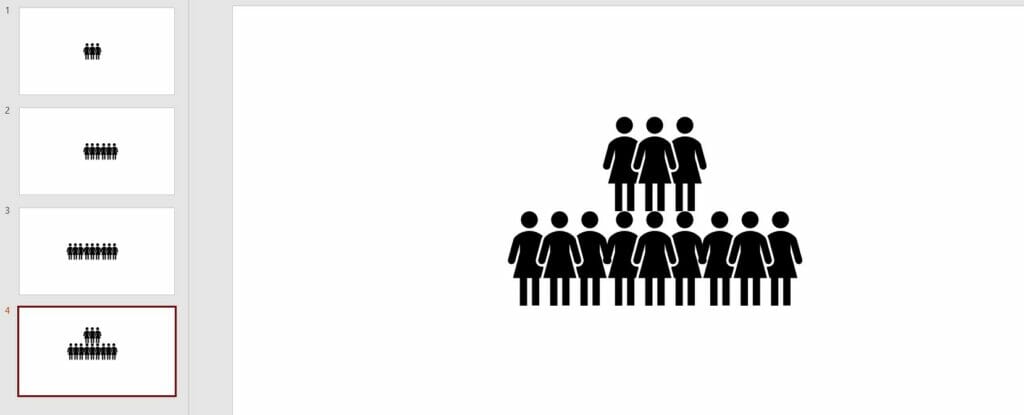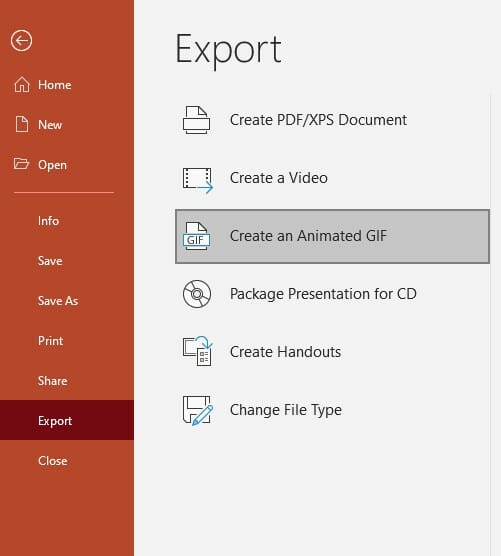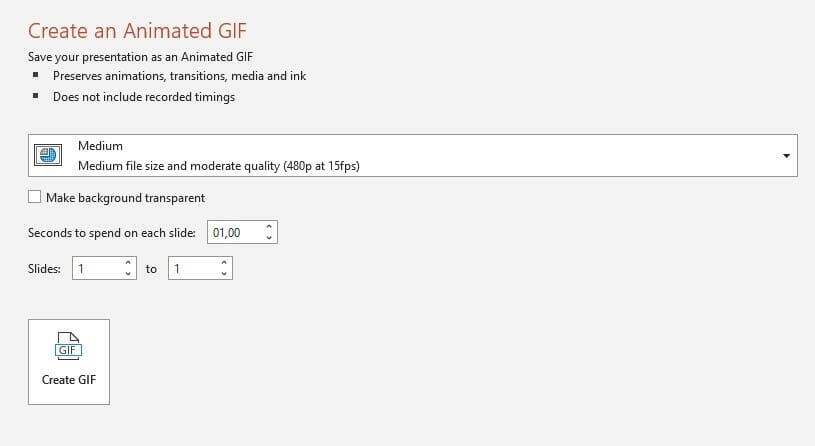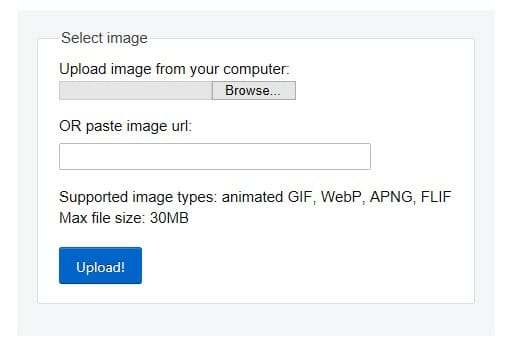
Animated GIFs in PowerPoint: Your Tutorial
Looking for a way to liven up your PowerPoint presentation’s content? How about using a GIF? Animated images are everywhere these days. So why not use GIFs for your presentation content, too?
GIFs are guaranteed to grab your audience’s attention. They’re a fun and entertaining way to highlight your content and key messages. Plus, GIFs have smaller file sizes than videos, which saves you loading time. Learn how to create GIFs and insert them into your presentation.
What is an animated GIF?
GIF stands for graphics interchange format. This is a type of bitmap image format that supports up to 8 bits per pixel, allowing an image to have access to a 255-color palette. GIF files are perfect for images with a small color palette and, of course, animations. Also, the file size is usually smaller than JPEG files.
Most GIF files are animated. That is, they’re not static images, like JPEG files, but repeat automatically after a few seconds. Other GIFs only once and stop on the last image.
Why use GIFs?
GIFs are a great choice if you want to liven up your presentation and use movement to attract your audience’s attention. There are so many possibilities for using GIFs:
- GIFs instead of videos → smaller file size and shorter loading time
- Animated logos
- Animated pictograms
- Slideshows
- Illustrating trends, data, processes

Always be mindful of using GIFs appropriately. Since GIFs always draw attention, they should be carefully selected so as not to distract from the content of your presentation. To use GIFs effectively, it is advisable to use them sparingly and strategically incorporate them at the right points in the presentation.
Ideally, GIFs should be placed at key points to emphasize important elements or visualize complex concepts. Additionally, it is recommended to use GIFs that have a clear connection to the message of the presentation and support the topic.
GIFs in Various Industries
GIFs can be used in a variety of industries and professional fields to enhance presentations and make content more engaging.
In the marketing industry, animated logos or GIFs can be used to illustrate trends and statistics. Additionally, GIFs can reinforce their brand message. In education, GIFs can visually represent complex concepts and support the learning process. Even in technical or scientific presentations, GIFs can be used to explain processes or procedures in a visual manner.
The versatility of GIFs allows them to be effectively used in diverse contexts. In casual and informal presentations, humorous or entertaining GIFs can be used to amuse the audience and lighten the mood. In sales or business presentations, GIFs can be employed to present products or services in an engaging way and pique the interest of potential customers.
How to create a GIF
So, you’ve decided to insert a GIF into your PowerPoint? Then you have come to the right place. There are several ways to create a GIF, which we will show below.
Create a GIF directly in PowerPoint
GIFs contain a series of images that are displayed in sequence quickly enough to create an animation. To create these in PowerPoint itself, you can use a transition or, as we’ll explain below, use the slide transition, Morph.
1. Before you start creating, you need to determine the shape and size of your GIF. If you are using a standard widescreen slide, the GIF will also adopt the 16:9 aspect.
2. Open the PowerPoint slide on which you want to insert the GIF.
3. Click on the Design In the Customize group you can set your slide size by clicking Slide Size > Custom Slide Size….
4. Now insert your desired object, in our case an icon, by going to the Insert tab and selecting Icons in the Illustrations group.

Tip: You can find more professional icons from PresentationLoad for your business here.
5. Choose an icon and create a duplicate of the slide in the thumbnail view by pressing Ctrl+Shift+D (A Morph transition needs two slides with the same object).

6. Now go to the slide with the duplicate and make any changes you want to the icon. For example, change the position, the color or text.
7. Click on the duplicate icon and go to Transition > Morph in the Transition to This Slide group.

8. Stay on the Transitions tab and go to Effects Options. There you can choose how you want the transition to work.
9. Select Objects, as in our example.
10. Click Preview in the Transitions tab to see what your Morph transition will look like.
11. Now go to File > Export and select Create Animated GIF.

12. Select the file size you want and click Create GIF.

13. In the same window, you can also choose how many Seconds to spend on each slide.
14. A progress bar for your GIF file will appear in the status bar at the bottom. This normally takes only a few seconds.
Our GIF looks like this:

Create a GIF in Photoshop
Looking to create your own content and use custom images to make a GIF for your key messages? No problem. Photoshop allows you to turn your own images into GIFs. This is how you do it:
For this tutorial, you need the Photoshop image editor and some experience using it.
1. Remember to use a tripod when taking pictures so that they are taken from the same perspective.
2. Modify each captured image the way it should appear later in the GIF sequence.
3. Make sure all your pictures have the same number of pixels.
4. Import the pictures to a Photoshop file under File > Scripts > Load Files Into Stack. This opens a window. Click Browse to find your pictures. Hold down the Shift key, select your photos, click Open and OK. Your photos will now be imported into a single layer file. On the right side, you’ll see several new layers. These will become the frames of your GIF.
5. Now it’s time to design a frame animation. To do this, go to Window > Timeline at the bottom of your workspace.
6. Click the arrow on the button in the middle of the panel and select Create Frame Animation. Your first photo will now be inserted into the timeline for you.
7. To convert layers into animation frames, go to the upper-right corner of the Timeline panel and click the menu icon. Now select Make Frames From Layers.
8. If your photos are playing in reverse order, go back to the Timeline menu icon again and select Reverse Frames.
9. Click under each frame and select how long it should appear for before switching to the next frame. A transition of one to five seconds is optimal.
10. You can also set an infinite loop for your GIF, copy, paste, and flip the images. Before copying and pasting, set the playback time so you don’t have to set it again for each copy. To copy the images, click on the first image, hold down the Shift key and click on the last image. Then go to the right menu and click Copy Frames. Then switch to Paste Frames in the same menu.
11. When the Paste Frames window opens, be sure to select Paste After Selection. Now you can reverse the frames.
12. Go back to the menu and click on Reverse Frames (as in point 8). Two identical frames should now appear in the center. Delete one of them so that your GIF doesn’t lag.
13. You can preview your GIF by clicking the play button at the bottom of the timeline window.
14. Now save your file as a GIF. First make sure the infinite loop is set to Forever (in the bottom left corner). Now select File > Export > Save for Web (Legacy) to save it.
This quick guide can also be found as a video here.
Find animated GIFs on the internet
Want to insert a GIF into PowerPoint but don’t want to create your own? You can find GIFs on the web using PowerPoint’s online image search.
In PowerPoint, go to Insert > Pictures > Online Pictures…. or Insert Clip Art for older PowerPoint versions. Go to the search box and type animated GIF. Now you can select a GIF from the category you want.
Tip: There is a wide range of online tools and resources available that allow you to create and download GIFs. These tools often offer easy-to-use interfaces and various editing options to customize the desired GIF. Some tools also provide features to optimize the GIF file size to reduce loading times.
Additionally, there are websites that offer a variety of high-quality and royalty-free GIFs that can be used in presentations. Using such resources saves time and allows you to find or create engaging GIFs for your presentation.
How to insert a GIF in PowerPoint
Now that you know how to create GIFs, let’s show you how to insert them into PowerPoint:
For Windows:
1. Select the slide where you want to insert the GIF.
2. Now go to Insert > Pictures. This will open the Insert Picture From drop-down menu.
3. Select the file you want from one of the locations in the drop-down menu and click Insert.
For macOS:
1. Select the slide where you want to insert the GIF.
2. On the Home tab under Insert, go to Picture > Picture from File.
3. In the window that opens, browse for the file you want and click Insert.
How to play animated GIFs
You’ve inserted your GIF on a slide and it still appears as a just a picture. Don’t worry, with just a few clicks, you can play back your GIF.
For Windows:
1. Go to the Slide Show tab.
2. In the Start Slide Show group, click From Current Slide.
3. The GIF file will now play in a continuous loop.
For macOS:
1. Go to the Slide Show menu.
2. Now select Play from Current Slide.
3. The GIF file will now play in a continuous loop.
How to adjust the animation loop frequency
Your GIF is now inserted into PowerPoint and playing in an endless loop. To set how often it plays, use the online editor at ezgif.com.

Go to the GIF frame extractor on ezgif.com and upload your GIF file. You can set the repetition by selecting Split to frames > Edit animation > Loop count > Make a GIF! Save the new file and paste it into the presentation again.

Some limitations when using GIFs
Keep the following points in mind when using a GIF in PowerPoint:
- GIFs start automatically when you switch to a slide. This means that it’s not possible to control playback with a mouse click, so keep this in mind during your presentation.
- GIFs have only 256 colors, which can reduce the image quality for photos.
- You can’t create transparent areas with a GIF.
- You can’t crop a GIF.
- Large File Size: To use GIFs effectively in presentations, it’s important to optimize their file size. Large GIFs can slow down loading times and impact the presentation. By reducing the color palette, using compressed images, and limiting the animation duration, the file size of GIFs can be reduced without significantly compromising visual quality. Optimizing the file size ensures smooth playback of GIFs and enhances the user experience during the presentation.
Conclusion: GIFs liven up a presentation
If you want something entertaining to catch your audience’s eye and attention, choose a GIF.
You don’t always have to turn to elaborate videos. A GIF is a great way to illustrate a process or even your key messages. And thanks to its small file size, you won’t have to deal with long loading times. You can also customize your animated GIF by adjusting its loop frequency however you like. Plus, they’re fun and easy to create!
Use an animated GIF; you won’t regret it.
If you have any questions about GIFs or PowerPoint in general, feel free to reach out to us at [email protected]. We’re here to assist you.
Are you looking for professionally designed slide templates to support your key message? Visit our shop for a wide range of slides on various (business) topics available for download. Explore our shop today! ►Go to Shop
You may also be interested in other articles:




